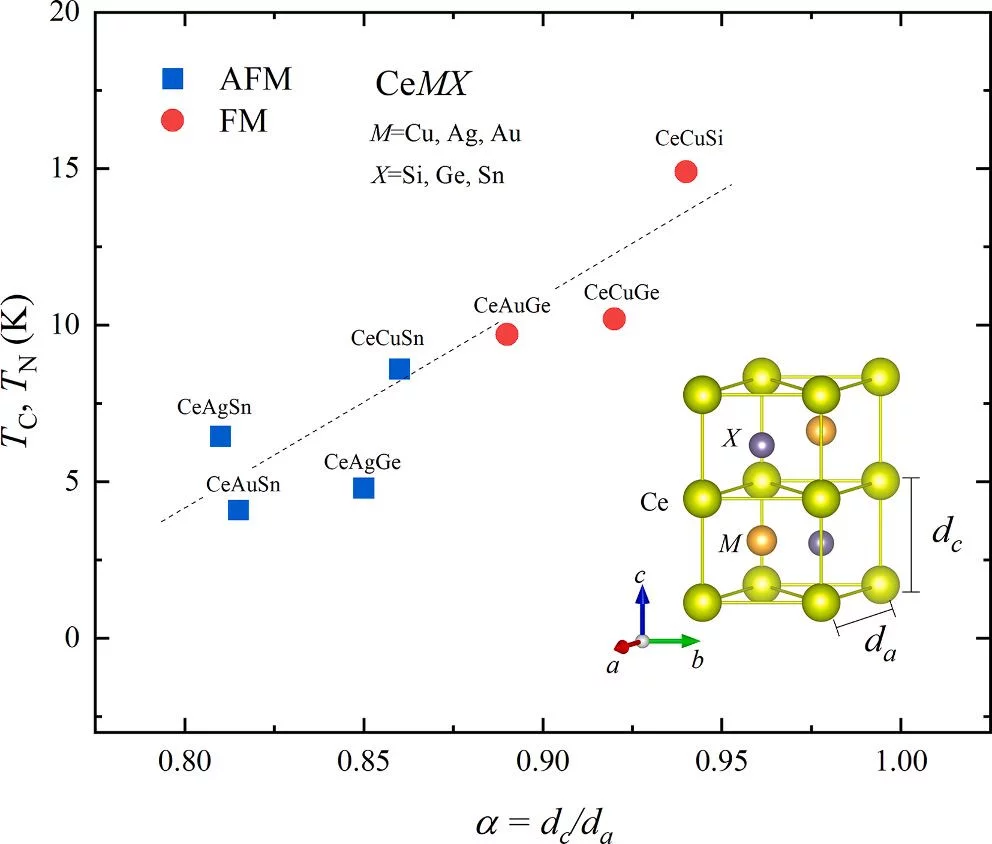We present a study of Cu-substitution effects in 4f-Ce intermetallic compound CeAu1-xCuxGe, with potentially unusual electronic states, in the whole concentration range (x = 0.0 – 1.0). The parent CeAuGe compound, crystallizing in a non-centrosymmetric hexagonal structure, is a ferromagnetic semimetal with Curie temperature 10 K. Cu-doping on Au-site of CeAuGe, CeAu1-xCuxGe, changes the crystal structure from the non-centrosymmetric (P63mc) to centrosymmetric (P63/mmc) space group at the concentration x ∼ 0.5, where the c-lattice constant has a maximum value. Magnetic susceptibility and electrical resistivity measurements reveal that all Cu-doped compounds undergo magnetic phase transition near 10 K, with the maximum transition temperature of 12 K for x = 0.5. The neutron powder diffraction experiments show the ferromagnetic ordering of Ce3+ magnetic moments with a value of about 1.2 μB at 1.8 K, oriented perpendicular to the hexagonal c-axis. By using symmetry analysis, we have found the solutions for the magnetic structure in the ferromagnetic Shubnikov space groups Cmc'21′ and P21′/m' for x < 0.5 and x ≥ 0.5, respectively. Electrical resistivity ρ(T) exhibits a metallic temperature behaviour in all compositions. The resistivity ρ(T) has a local minimum in the paramagnetic state due to Kondo effects at high doping x = 0.8 and 1.0. At the small Cu-doping level, x = 0.2, the resistivity shows a broad feature at the ferromagnetic transition temperature and an additional transition-like peculiarity at 2.5 K in the ferromagnetic state.
Reference: S. Shin et al, Journal of Magnetism and Magnetic Materials 551, 169147 (2022)
Read full article: here

